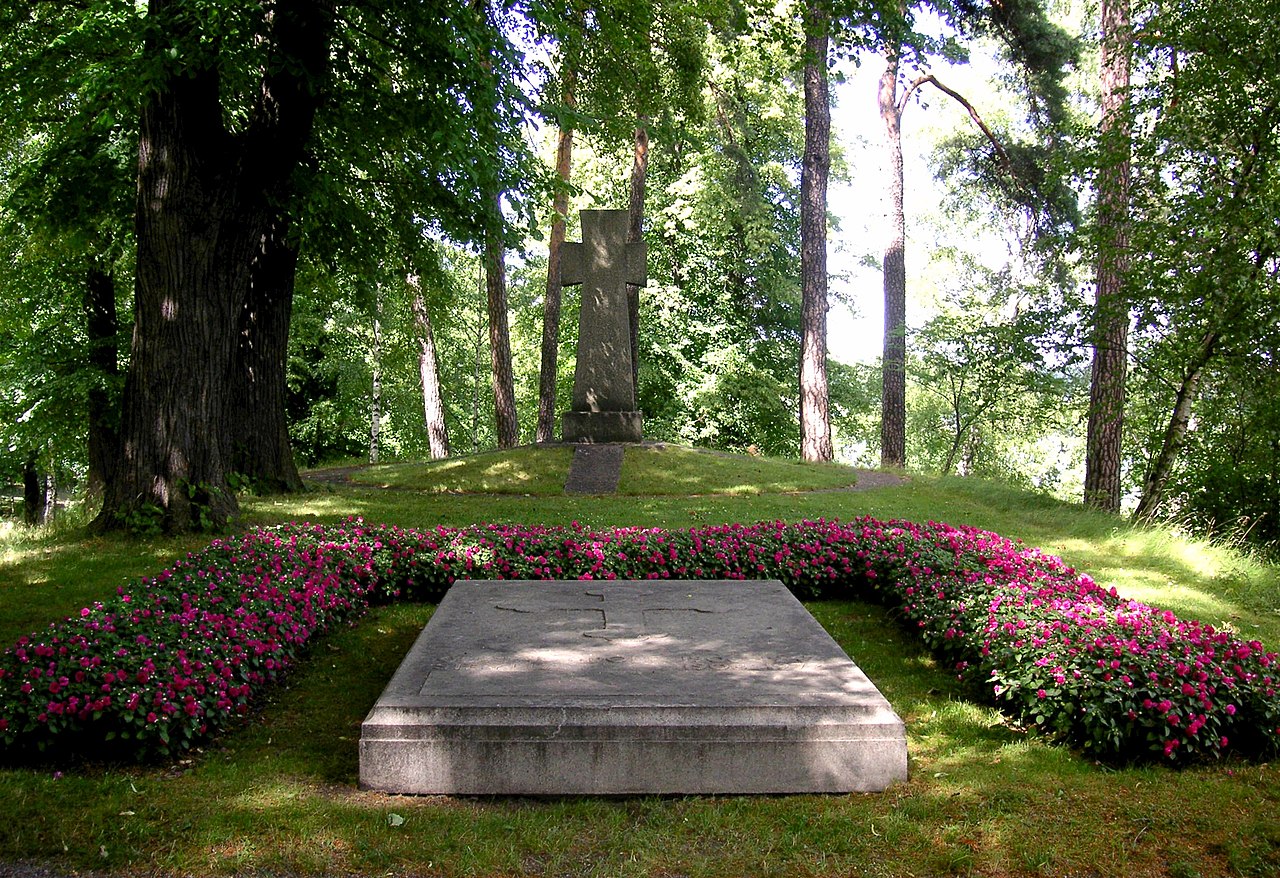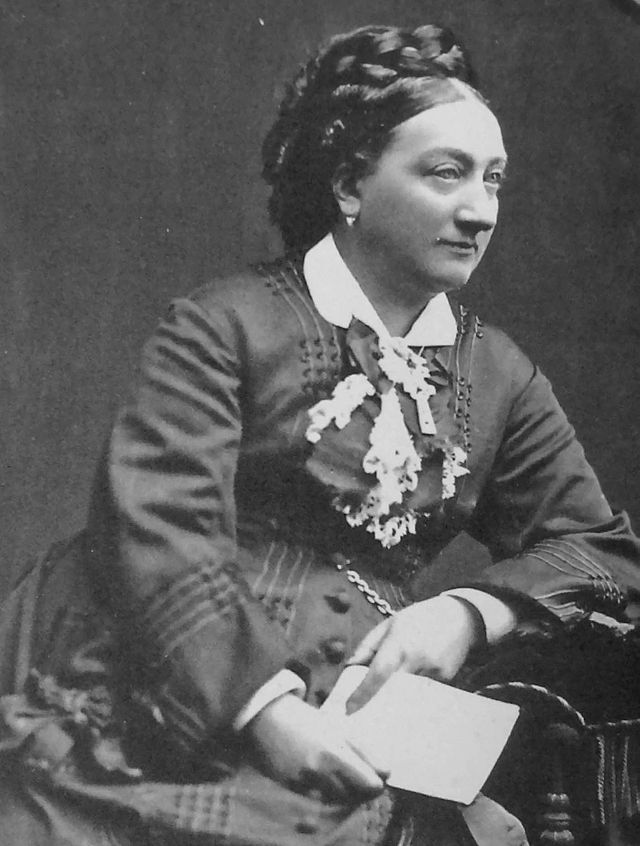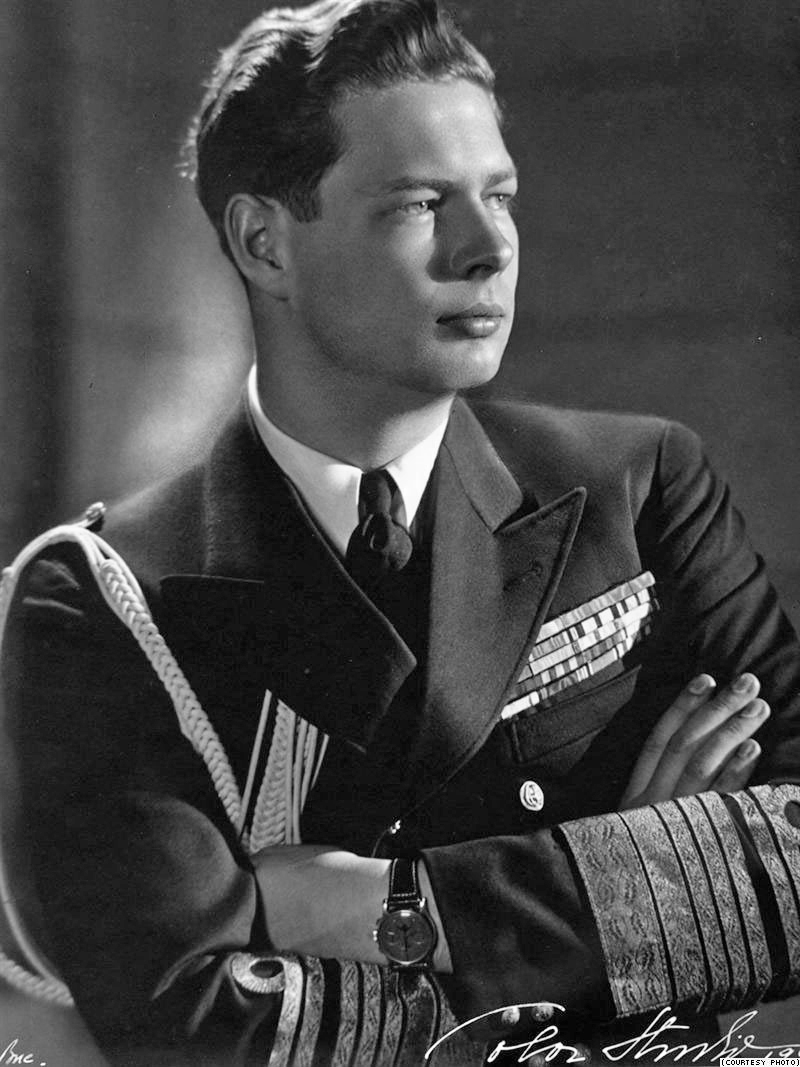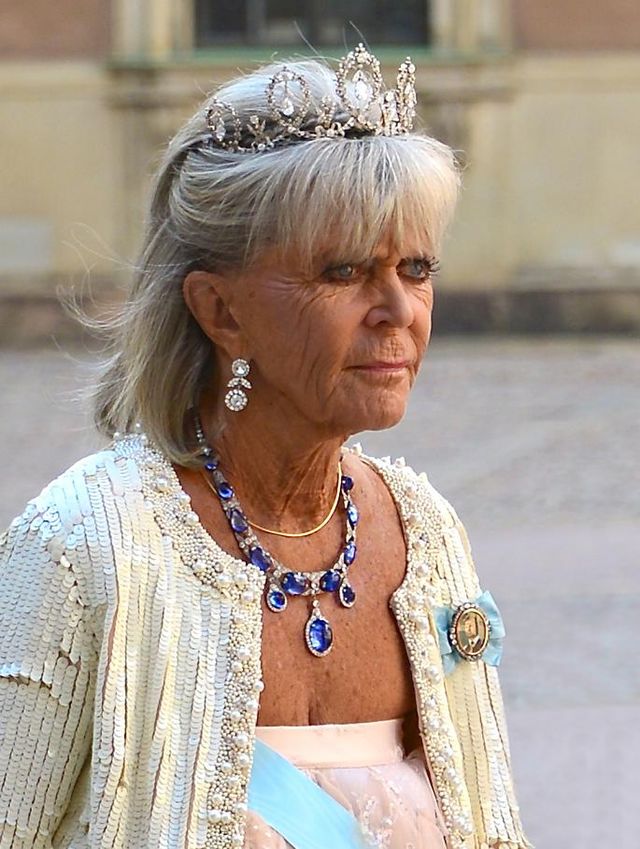by Susan Flantzer
© Unofficial Royalty 2024
King Carl XVI Gustaf sitting on the Silver Throne of Queen Cristina during the Royal Affirmation Ceremony on September 19, 1973
The last accession to the Swedish throne occurred when 27-year-old King Carl XVI Gustaf succeeded his grandfather King Gustaf VI Adolf who died on September 15, 1973.
At the time of Carl Gustaf’s birth in 1946, the current King of Sweden was his great-grandfather King Gustaf V (reigned 1907 – 1950). On January 26, 1947, when Carl Gustaf was only nine months old, his father Prince Gustaf Adolf of Sweden, Duke of Västerbotten died in an airplane crash at Kastrup Airport near Copenhagen, Denmark. Prince Gustaf Adolf had been second in the line of succession behind his father, the future King Gustaf VI Adolf (reigned 1950 – 1973) and his son four-year-old Prince Carl Gustaf had been third in the line of succession. When his father died Carl Gustaf became second in the line of succession behind his grandfather. Carl Gustaf’s great-grandfather King Gustaf V died on October 29, 1950, and his grandfather became King Gustaf VI Adolf while four-year-old Carl Gustaf became Crown Prince.
History

King Oscar II, wearing the Regalia of Sweden, was the last monarch of Sweden to have a coronation (1873); Credit – Wikipedia
King Eric X was the first King of Sweden known to have a coronation. He was crowned in November 1210 in Uppsala, then the religious center of Sweden, by Archbishop Valerius of Uppsala. Coronations were held in various cities during the 13th and 14th centuries. From the middle of the 15th century onward, coronations were held at Uppsala Cathedral or the Storkyrkan (The Great Church) in Stockholm. The only exception is the coronation of King Gustav IV Adolf, which took place in Norrköping in 1800, where the Riksdag (Swedish legislature) was located because the political atmosphere in Stockholm was considered too uncertain.
Following the coronation of King Oscar II in 1873, all subsequent Swedish monarchs chose not to be crowned although there is no law preventing a coronation.
Since 1594, all Swedish monarchs have issued the required Konungaförsäkran (King’s Declaration). The King’s Declaration stated that the Swedish monarch would fulfill the duties required but not exceed them. For example, this meant that the Swedish monarch promised not to start a war without consulting the Riksdag and the Government and would follow the statutes of the constitution. The royal declaration also included the more solemn royal oath. However, the current Basic Laws of Sweden no longer mandate a King’s Declaration.
The Royal Affirmation, a eulogy for the deceased monarch and the announcement of the new monarch’s accession to the throne, is usually the new monarch’s first public statement. The new monarch also announces their royal name, title, and motto and gives a speech.
What Happened?

Minister for Justice Lennart Geijer administering the King’s Oath to King Carl XVI Gustaf in the Council Room at the Royal Palace; Credit – Photo: TT
On September 19, 1973, King Carl XVI Gustaf took the then-required King’s Declaration and Oath during a meeting of the Council of State, was enthroned in a simple ceremony, and made an accession speech.
The King’s Declaration and Oath

The Council Chamber at the Royal Palace of Stockholm; By Øyvind Holmstad – Own work, CC BY-SA 4.0, https://commons.wikimedia.org/w/index.php?curid=45911100
King Carl XVI Gustaf swore The King’s Declaration and Oath before the Council of State in the Council Chamber at the Royal Palace of Stockholm on Wednesday, September 19, 1973, at 2:00 p.m. The King’s paternal uncle Prince Bertil also participated in the council. Prime Minister Olof Palme read King Gustaf VI Adolf’s death certificate. Minister for Justice Lennart Geijer administered the King’s Oath to King Carl XVI Gustaf. After the oath was sworn, King Carl XVI Gustaf signed it.
King Carl XVI Gustaf’s King’s Declaration and Oath read as follows:
“We, Carl Gustaf, King of Sweden, solemnly swear that as it pleased the most high God, to call upon the formerly Most Mighty High Prince and Lord Gustaf VI Adolf, King of Sweden, Göte and Vende, and We, according to and by virtue of the Estates of the Kingdom of Sweden established on September 26, 1810, and the established Order of Succession, ascend to the Royal Swedish Throne.
Therefore, We hereby solemnly and most strongly affirm that We will govern the Kingdom according to the literal form of government established by the Estates of the Kingdom on June 6, 1809, and adopted by the King and the Estates of the Kingdom for compliance, as well as the Kingdom’s other valid constitutions, general laws, and make statutes.
We will, in accordance with the just-mentioned form of government, make laws, as a righteous King, and be a devoted father to the Swedish people, through a legal, just, and gentle government. May We with the help of God the most high, and with a clear conscience, to the best of Our ability, be able to defend, seek, and promote the true benefit and good of the kingdom and every citizen. Through free will and after mature consideration, We therefore confirm with the signature of Our name and with this oath, that We will comply with and fulfill this. So true, God help me for life and soul.”
The King then announced his royal name, title, and motto: “Since my dear ancestor, King of Sweden, the Goths and the Wends, Gustaf VI Adolf has died, I have succeeded Him as King of our nation. My regnal name shall be Carl XVI Gustaf, my regnal title shall be King of Sweden, and my motto shall be For Sweden – With the Times.”
Royal Affirmation
King Carl XVI Gustaf then appeared before the Riksdag (Swedish Parliament), the diplomatic corps, and other Swedish officials, for a ceremony in the Hall of State at the Royal Palace of Stockholm.

The impressive Hall of State in the Royal Palace in Stockholm and Silver Throne of Queen Cristina; Photo Credit: © Susan Flantzer
In the Hall of State, sitting on the Silver Throne of Queen Cristina, King Carl XVI Gustaf gave a speech in remembrance of his grandfather King Gustaf VI Adolf. Like his two predecessors, King Gustaf V and King Gustaf VI Adolf, King Carl XVI was not crowned. The Regalia of Sweden were displayed on cushions to the right and left of the Silver Throne but were never given to the king.
King Carl XVI Gustaf with his four sisters on the balcony of the Royal Palace of Stockholm
After the ceremonies, King Carl XVI Gustaf waved to the crowds from the balcony of the Royal Palace of Stockholm. He was joined by his four elder sisters Princess Margaretha, Princess Birgitta, Princess Désirée, Princess Christina and his paternal uncle Prince Bertil.
This article is the intellectual property of Unofficial Royalty and is NOT TO BE COPIED, EDITED, OR POSTED IN ANY FORM ON ANOTHER WEBSITE under any circumstances. It is permissible to use a link that directs to Unofficial Royalty.
Works Cited
- Bidragsgivare till Wikimedia-projekten. (2005). Anger kungens förpliktelse vid trontillträdet. Wikipedia.org; Wikimedia Foundation, Inc. https://sv.wikipedia.org/wiki/Konungaf%C3%B6rs%C3%A4kran
- Bidragsgivare till Wikimedia-projekten. (2011). Kröningar av Sveriges regent. Wikipedia.org; Wikimedia Foundation, Inc. https://sv.wikipedia.org/wiki/Svenska_kr%C3%B6ningar
- Carl XVI Gustaf. (2022). Wikipedia. https://sv.wikipedia.org/wiki/Carl_XVI_Gustaf
- HM The King. (2016). Kungahuset.se. https://www.kungahuset.se/english/royal-house/hm-the-king#h-Biography
- Wikipedia Contributors. (2024). Coronation of the Swedish monarch. Wikipedia; Wikimedia Foundation.












